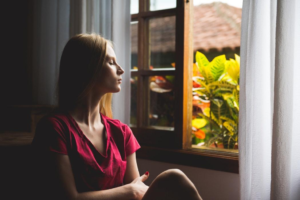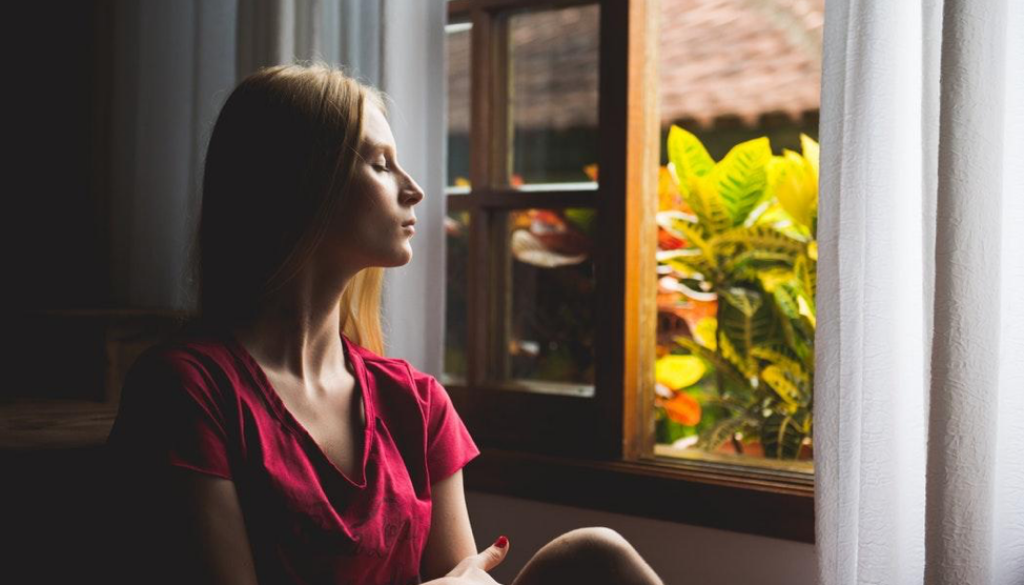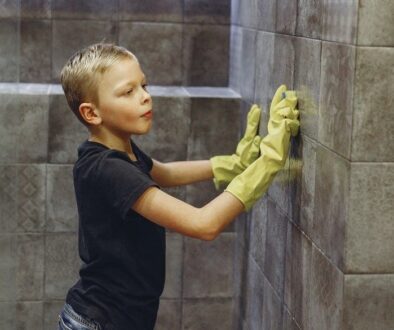Creating a Mindful Space at Home
By Paige A. Mitchell, Freelance Writer & Reviewer

Mindfulness is all the rage right now, but what does it really mean? We’ve heard of eating mindfully, living mindfully and increasing our ability to be mindful by staying off our phones and maybe even doing some yoga. A good all-purpose definition is that mindfulness is the ability to be completely present. To be mindful is to be aware of where we are and what we’re doing. It sounds very simple, but it can be incredibly difficult to not overreact or become overwhelmed. An often overlooked facet of mindfulness is our own home environment – here are some ways to create a mindful space at home.
Embrace household chores
Making your bed is one of the very first things you can do each morning to exercise mindfulness. Taking a few moments to complete this seemingly simple task can enhance productivity and set a positive mood for the full day ahead of you. You’ll also get to begin the day with one goal already crossed off of your to-do list. This chore forces you to slow down and take a step back from your busy and frantic morning routine.
Housework can take up a good chunk of time on a daily basis, especially if cleanliness is particularly important to you. Rather than considering chores as boring tasks, you can turn them into mindful rituals. Next time you wash the dishes or fold laundry, focus on the task at hand instead of rushing through the chore. Pay attention to the texture of each dish or textile, the temperature of the water or warmth of freshly laundered towels, and the smell of the dish soap or detergent. By tuning in with this approach, every small act becomes a sacred ritual with meaning and intention.
Connect with loved ones
Whether you live with your spouse and kids or a couple of roommates, there are plenty of moments in the day where you can bring mindfulness home. Say good morning with intention and as much cheerfulness as you can muster at 8 a.m., forgive small annoyances, really listen when someone is talking, and use touch to convey love and affection when appropriate.
Reduce stress
“Mindfulness arises when you pay attention on purpose without judging and in a friendly, allowing way,” writer Jeffrey Brantley says. “By paying attention this way and establishing mindfulness of your inner and outer life, moment by moment, a certain ease arises, and you can connect more deeply with what is happening. You are less likely to be hijacked by the urgency of the stress reaction.”
This hijacking that Brantley describes can take a major toll on our mind and body. Symptoms include tense muscles, increased heart rate, digestive problems, poor concentration, irritability, and anxiety.
Take five minutes a few times a day to just stop, breathe and reconnect with your surroundings. By tuning in at home, you might discover problem areas that are subconsciously stressing you out, like a squeaking ceiling fan that’s interrupting your sleep or a kitchen table full of junk mail forcing you to eat from the coffee table.
Declutter
Marie Kondo is more popular than ever, and whether or not you believe in her philosophy, many of us could do with a little decluttering. Use a system of three boxes: keep, donate and throw away. If you haven’t used it in three years, get rid of it – no ifs, ands or buts. No matter how useful it may seem or how amazing the outfit looks, if you haven’t touched it in that long, you probably never will.
The more junk mail, never-worn clothing, and less-than-sentimental souvenirs you have laying around the house, the more likely it is for stress to build. Discover the magic of minimalism by removing all unnecessary items from each room in the house. Feeling less dependent on material and perhaps superficial objects can help clear your mind, letting you feel more peace and tranquility.
You can instill mindfulness in your partner or children too by asking them to help you declutter, tidy, and organize their own belongings. It may be more difficult to get kids on board with tossing their toys, but mindfulness, the emotional detachment of ‘things’, and being charitable through donations all lend a powerful perspective that can help shape a positive lifestyle when it’s learned at a young age.
Detox
Detoxing isn’t limited to strict diets and calorie-counting. You could define toxins as technological devices, social media, alcohol, plastic, chemicals, etc. Try to be more cognizant of what could be contributing to a toxic lifestyle and make an effort to nip those bad habits in the bud.
Set a strict curfew for technology use and stop scrolling through news feeds before bed. Try to limit drinking to the weekends only. Start using reusable grocery bags and storage containers rather than those plastic produce sacks and ziplocks. Swap harsh chemicals for vinegar and baking soda. Furthermore, open the windows and let the breezes in, relax near a sunny window and start a conversation with your family member.
Reserve a room
Now that you’ve embraced the art of housekeeping, you’ve decluttered and detoxed, it’s time to carve out space at home where you can go and just be. Doesn’t that sound lovely? It doesn’t have to be an entire spare bedroom either. Just a space – big or small – that you can make your own.
Design this space for comfort. Think cushy floor poufs and a lamp or two. At first, try reserving this space for nothingness, like a meditation room to escape the daily grind. If this space isn’t attractive to you as-is, you could add a favorite book, a fresh journal, or family scrapbook. Whatever works for you, reserve this space as a retreat – not another place to collect clutter.
Set intentions
Before you step into the house when you get back from work, set an intention for how you want the evening to go. Just this small act of relaxing your body and projecting some positivity can make a big difference in your attitude toward your home and others in it. Instead of immediately noticing how clean or dirty the house is, whether dinner has to be made, or how the kids are behaving, take a deep breath and internally (or externally) express gratitude for a home to come back to. Gratitude takes what we have and turns it into enough.
With these tips, go forth and create a calm, mindful space at home that allows you to live in the moment and have full awareness of all that goes on around you.
Photo from Unsplash
Paige enjoys writing and sharing practical advice with like-minded folks on how to create healthier homes where we can not only live, but thrive.



